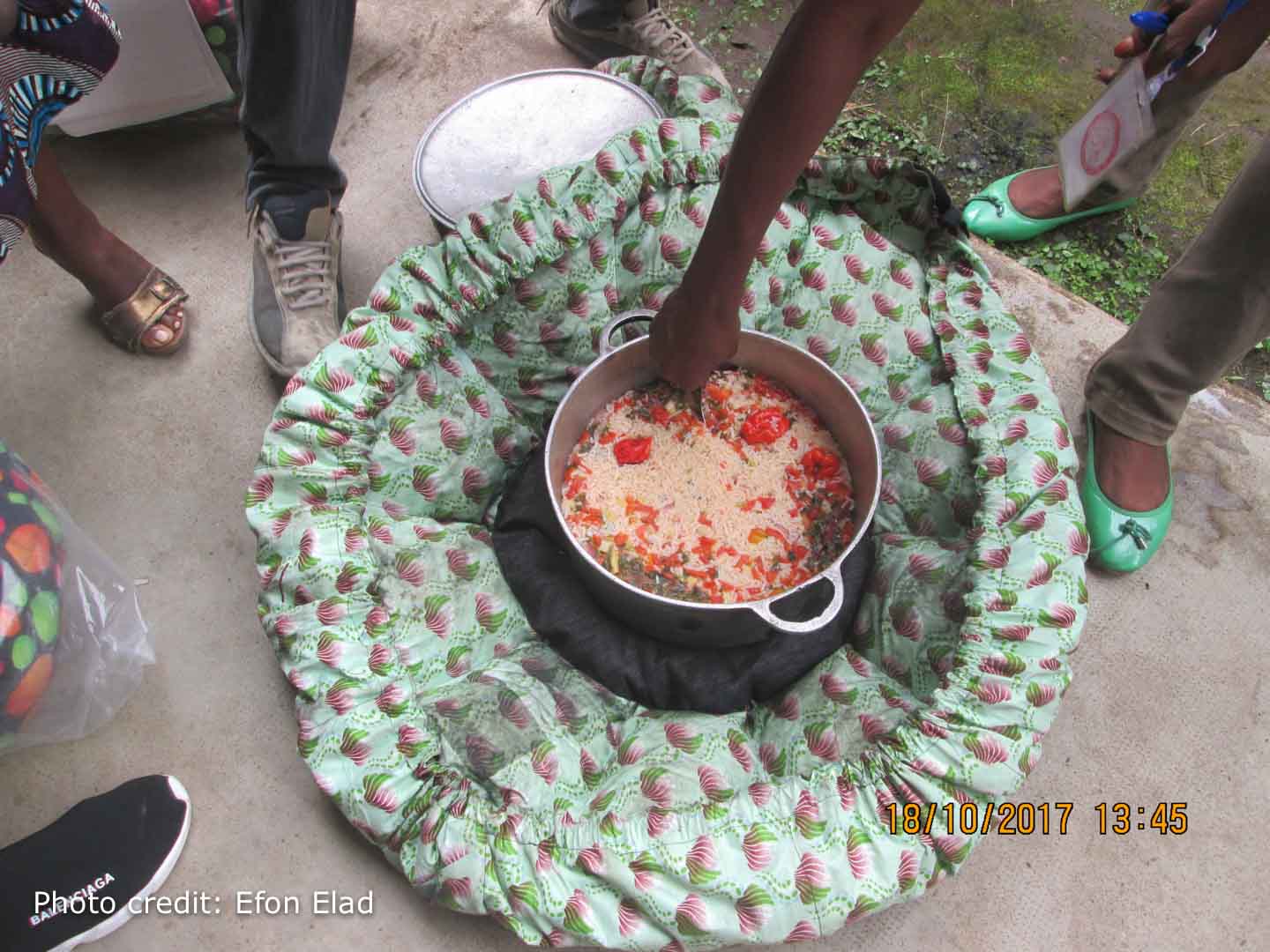Energy-efficient cooking bags in Cameroon
In rural Cameroon, only a few people have access to electricity. Therefore, cooking with firewood is common. Women and children, in particular, have to walk long distances to collect wood and then spend a lot of time preparing food on inefficient three-stone fire cookers. The smoke produced in the process leads to serious health problems. Climate change and the overexploitation of local wood resources threaten the livelihoods of the population.
The project of Pro Climate International (PCI) is counteracting this: 6,000 families in the west and southwest of Cameroon receive energy-efficient cooking bags, the so-called "Wondercooker". The cooking bags are produced locally by trained sewers. They are made of cotton fabric on the outside and recycled and crushed polystyrene on the inside. PCI is looking for alternatives for the filling and users can return defect cooking bags so that the materials can be reused.

The so-called "Wondercooker" are a simple and cost-effective way to save energy when cooking and significantly reduce both pollutants and greenhouse gas emissions. Food is first cooked at the cooking zone and then placed in the cooking bag. This is sealed so that the food is simmered gently. No further energy is required and the women no longer have to remain at the cooking area until the food is ready.
With the energy-efficient cooking bags, the families use about 60 percent less firewood and CO2 emissions are saved accordingly. In addition, the project helps to protect the forests, as less wood is used and the rate of deforestation is reduced. Projects for energy-efficient cooking bags in the ClimatePartner portfolio are registered with international standards.
Explore our projects
Biochar for Climate Action, Healthy Soils, and Better Harvests

A certified climate project combined with additional commitment

Expansion of renewable energy generation in Asia

Ceramic water filters save CO2 and improve health

Improved cookstoves worldwide – for better health and cleaner air

A certified climate project combined with additional commitment

Powering access to renewable energy in Africa

A certified climate project combined with additional commitment

Restored ecosystems remove carbon

Turning degraded farmlands into healthy ecosystems

Improved cookstoves - better for health and the environment





